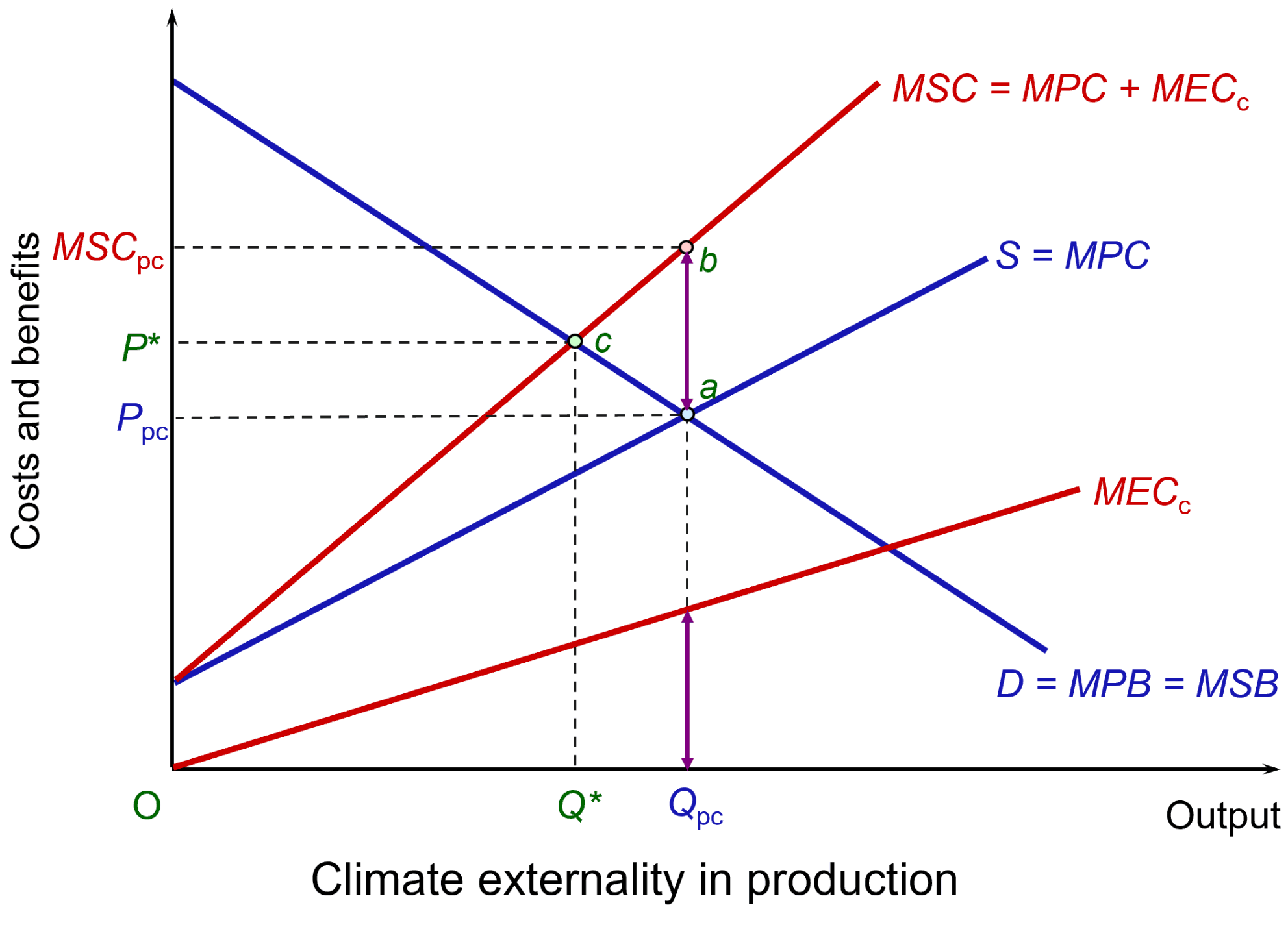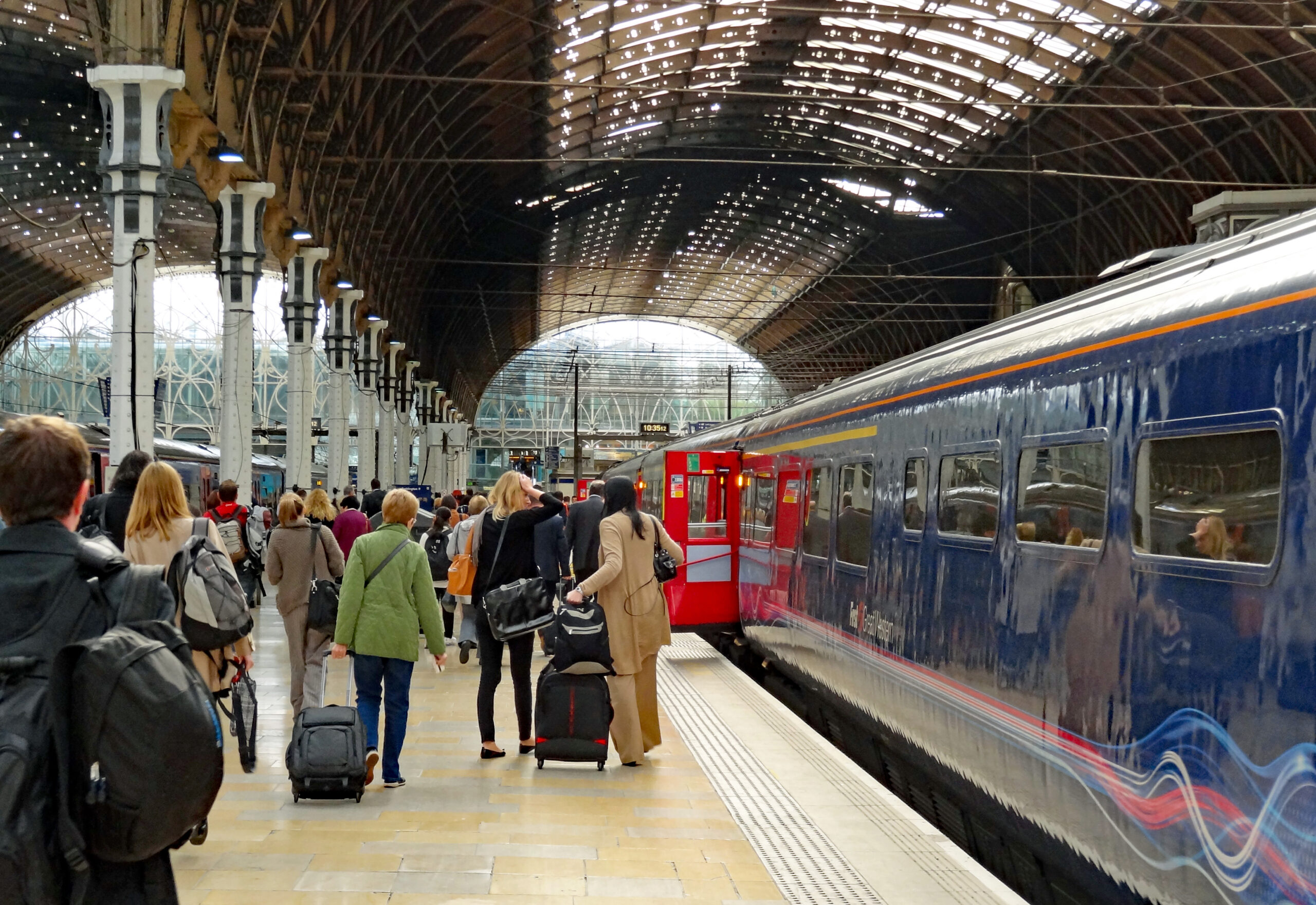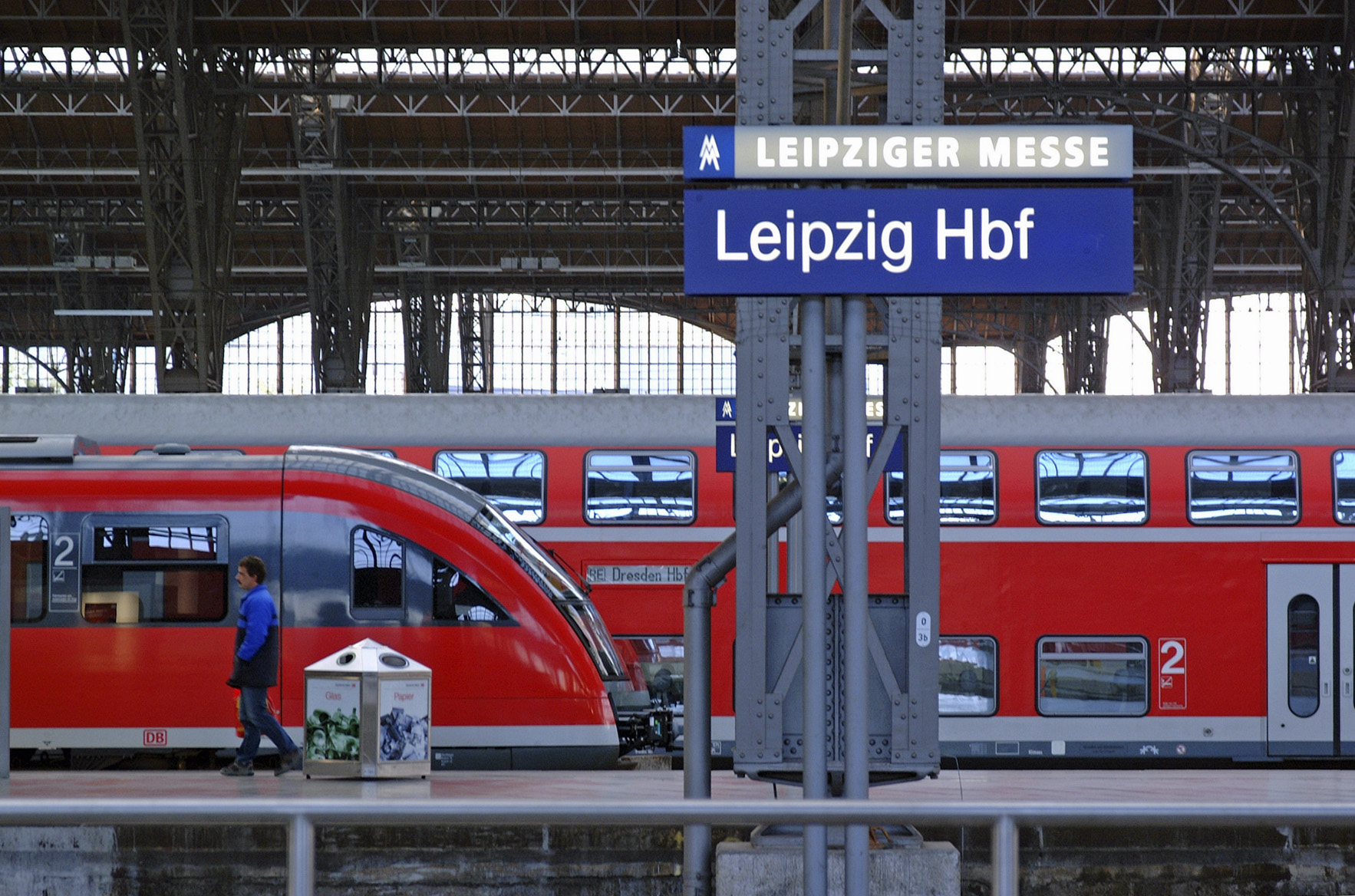 Africa’s energy transition is at a pivotal moment. While the continent boasts abundant renewable energy resources, its electricity generation and distribution remain fragmented. Cross-border electricity trade has emerged as a potential game-changer, fostering energy security, reducing costs, and accelerating the adoption of renewables. However, is Africa fully leveraging this opportunity?
Africa’s energy transition is at a pivotal moment. While the continent boasts abundant renewable energy resources, its electricity generation and distribution remain fragmented. Cross-border electricity trade has emerged as a potential game-changer, fostering energy security, reducing costs, and accelerating the adoption of renewables. However, is Africa fully leveraging this opportunity?
In a forthcoming paper in the Energy & Environment journal, I join forces with my colleagues Mercy Adaji and Bereket Kebede to argue that the answer to this question is no. Our study examines the impact of cross-border electricity trade in renewable electricity generation across 21 African countries over a 24-year period (1996–2020). Our findings indicate that a 1% increase in electricity trade significantly raises the share of renewables in total electricity output by approximately 0.05%. This underscores the crucial role of regional integration in advancing Africa’s clean energy goals, aligning with previous studies (e.g., Boz et al., 2021; Song et al., 2022, linked below) that highlight how electricity market integration promotes renewable energy investments by stabilising supply and mitigating intermittency risks.
Despite these advantages, cross-border electricity trade remains significantly underutilised due to regulatory barriers, inadequate infrastructure, and governance challenges.
 Net electricity-importing countries tend to benefit more from trade, while net-exporting nations, particularly those reliant on fossil fuels, exhibit weaker positive impacts. Without targeted policies (such as carbon pricing and green subsidies) trade disparities may persist, slowing the transition to clean energy.
Net electricity-importing countries tend to benefit more from trade, while net-exporting nations, particularly those reliant on fossil fuels, exhibit weaker positive impacts. Without targeted policies (such as carbon pricing and green subsidies) trade disparities may persist, slowing the transition to clean energy.
Moreover, our results highlight the pivotal role of governance in fostering a robust electricity market. This is neither surprising nor new – quality of governance matters over the long term in all aspects of economic activity. Agostini et al. (2019), for instance, show that well-structured regulations and strategic investments in interconnections enhance the effectiveness of cross-border electricity trade. Transparent regulatory frameworks, expanded grid interconnections, and harmonised energy policies can significantly boost the impact of regional electricity trade.
By strengthening collaboration, African nations can mitigate energy poverty, enhance supply reliability, and accelerate the shift toward a greener future.
To capitalise fully on cross-border electricity trade, African policymakers must prioritise regional energy integration, invest in infrastructure and implement incentives to spur renewable energy expansion. With the right policies and co-operative strategies, Africa can harness its vast renewable potential and achieve a more sustainable, energy-secure future.
Articles
- Powering Africa’s sustainable future: The role of cross-border electricity trade on renewable electricity generation
Energy & Environment, Mercy Adaji, Nicholas Vasilakos and Bereket Kebede (17/2/25)
- A surplus based framework for cross-border electricity trade in South America
Energy Policy, Claudio A Agostini, Andrés M Guzmán, Shahriyar Nasirov and Carlos Silva (1/2/19)
- The effects of cross-border electricity trade on power production from different energy sources
The Electricity Journal, Deniz Ege Boz, Baris Sanli and M Hakan Berument (20/4/21)
- Energy market integration and renewable energy development: Evidence from the European Union countries
Journal of Environmental Management, Malin Song, Haitao Xu, Zhiyang Shen and Xiongfeng Pan (5/6/22)
Questions
- How does electricity trade help mitigate the intermittency challenges of renewable energy, and what mechanisms could further enhance its effectiveness?
- The study highlights governance quality as a crucial factor in the success of cross-border electricity trade. What governance-related challenges do African countries face in implementing a unified electricity market, and how can policymakers address them to maximize trade benefits?
- Our results show that net electricity-importing countries tend to gain more from trade than net-exporting ones, particularly those relying on fossil fuels. What policy measures can be introduced to ensure that net-exporting countries also benefit from electricity trade while advancing renewable energy integration?
- What are the most critical infrastructure and policy gaps that hinder the growth of cross-border electricity trade in Africa, and how can these be overcome to facilitate a more sustainable energy transition?
 On the day he came to office, President Trump signed a series of executive orders. One of these was to set in motion the process of withdrawing from the UN Paris climate agreement. Section 3(a) of the order reads:
On the day he came to office, President Trump signed a series of executive orders. One of these was to set in motion the process of withdrawing from the UN Paris climate agreement. Section 3(a) of the order reads:
The United States Ambassador to the United Nations shall immediately submit formal written notification of the United States’ withdrawal from the Paris Agreement under the United Nations Framework Convention on Climate Change.
The Paris Agreement is an international treaty on climate change. It was adopted on 12 December 2015 and came into force on 4 November 2016, 30 days after the point was reached when at least 55 countries accounting for at least 55% of global emissions had ratified the treaty.
Currently, all UN countries are signatories to the agreement and only Iran, Libya and Yemen are yet to ratify it. The agreement commits countries to limiting global warming to well under 2°C above pre-industrial levels and preferably to no more than 1.5°C. This would involve reducing greenhouse gas emissions and/or taking carbon absorbing measures.
 Since 2020, each country has been required to submit its own emission-reduction targets, known as ‘nationally determined contributions’ (NDCs), and the actions it will take to meet them. Every five years each country must submit a new NDC more ambitious than the last.
Since 2020, each country has been required to submit its own emission-reduction targets, known as ‘nationally determined contributions’ (NDCs), and the actions it will take to meet them. Every five years each country must submit a new NDC more ambitious than the last.
Rich countries are expected to provide finance to low-income countries. This is required to help poor countries adopt green technologies and to adapt to the harmful effects of climate change (e.g. through irrigation schemes and flood defences).
Countries set target dates by which emissions would be fully offset by carbon absorption measures (‘net zero’). The UN’s goal is to reach global net zero by 2050. According to the UN Climate Action site:
As of June 2024, 107 countries, responsible for approximately 82 per cent of global greenhouse gas emissions, had adopted net-zero pledges either in law, in a policy document such as an national climate action plan or a long-term strategy, or in an announcement by a high-level government official. More than 9000 companies, over 1000 cities, more than 1000 educational institutions, and over 600 financial institutions have joined the Race to Zero, pledging to take rigorous, immediate action to halve global emissions by 2030.
The Paris Agreement has helped to cut emissions or slow their rate of growth in most countries. Although net zero by 2050 may be unlikely, warming will be less than without the agreement.
The USA and the Paris Agreement
 In April 2016 the USA signed the Paris Agreement. As stated above, the Paris Agreement came into effect on 4 November 2016.
In April 2016 the USA signed the Paris Agreement. As stated above, the Paris Agreement came into effect on 4 November 2016.
President Trump came to office for the first time in January 2017. In June 2017, he signed an executive order in which he announced that the USA would withdraw from the agreement, arguing that it undermined the US economy and put it at a competitive disadvantage. He claimed that global warming is a hoax concocted by China designed to undermine the competitive power of the USA.
However, despite Trump’s intention to withdraw from the agreement, its terms did not allow a country to begin a withdrawal procedure for at least three years after the agreement was ratified (i.e. not before 4 November 2019) and then a year’s notice has to be given. This notice was given on 4 November 2019. In the meantime, the USA had to abide by the terms of the treaty. During this period, US representatives at COP meetings used the opportunity to promote fossil fuels. Withdrawal took place on 1 November 2020, just one day after the presidential election and just over two months before the end of Trump’s first term of office.
On 20 January 2021, his first day in office, President Biden signed an executive order to rejoin the agreement, which took place on 19 February 2021. He committed to cutting total greenhouse gas emissions by at least 50% by 2030. To achieve this, his administration adopted a number of emissions-reducing measures, for example requiring all new passenger vehicles sold after 2035 to be emissions free, giving tax credits for clean electricity generation, providing federal funds for smart agriculture and setting greener appliance and equipment standards.
But, as we have seen, newly elected President Trump for the second time announced that the USA would withdraw from the Paris agreement and would prioritise fossil fuel production, under the mantra, ‘drill, baby, drill’.
The economics of climate change
 Climate change is directly caused by market failures. One of the most important of these is that the atmosphere is a common resource: it is not privately owned; it is a global ‘commons’. Individuals and firms use it at a zero price. If the price of any good or service to the user is zero, there is no incentive to economise on its use. Thus for the emitter there are no private costs of using the atmosphere in this way as a ‘dump’ for their emissions and, in a free market, no incentive to reduce the climate costs.
Climate change is directly caused by market failures. One of the most important of these is that the atmosphere is a common resource: it is not privately owned; it is a global ‘commons’. Individuals and firms use it at a zero price. If the price of any good or service to the user is zero, there is no incentive to economise on its use. Thus for the emitter there are no private costs of using the atmosphere in this way as a ‘dump’ for their emissions and, in a free market, no incentive to reduce the climate costs.
And yet when firms emit greenhouse gases into the atmosphere there are costs to other people. To the extent that they contribute to global warming, part of these costs will be borne by the residents of that country; but a large part will be borne by inhabitants of other countries.
 These climate costs are external costs to the firm and are illustrated in the figure. It shows an industry that emits CO2. To keep the analysis simple, assume that it is a perfectly competitive industry with demand and supply given by curves D and S, which are equal to the marginal private benefits (MPB) and marginal private costs (MPC), respectively. There are no externalities on the demand side and hence MPB equals the marginal social cost (MSB). Market equilibrium is at point a, with output at Qpc and price at Ppc. (Click here for a PowerPoint.)
These climate costs are external costs to the firm and are illustrated in the figure. It shows an industry that emits CO2. To keep the analysis simple, assume that it is a perfectly competitive industry with demand and supply given by curves D and S, which are equal to the marginal private benefits (MPB) and marginal private costs (MPC), respectively. There are no externalities on the demand side and hence MPB equals the marginal social cost (MSB). Market equilibrium is at point a, with output at Qpc and price at Ppc. (Click here for a PowerPoint.)
Assume that the emissions create a marginal cost to society equal to MECc. Assume that the MEC increases as output and total emissions increase. The MECc line is thus upward sloping. At the market price of Qpc, these external climate costs are equal to the purple vertical line. When these external climate costs are added to private costs, this gives a marginal social cost given by MSC = MPC + MECc. The gives a socially optimal level of output of the product of Q* at a price of P*, with the optimum point of c.
 In other words, other things being equal, the free market overproduces products with climate externalities. If the output is to be reduced to the social optimum of Q*, then the government will need to take measures such as those advocated in the Paris Agreement. These could include imposing taxes on products, such as electricity generated by fossil fuels, or on the emissions themselves. Or green alternatives, such as wind power, could be subsidised.
In other words, other things being equal, the free market overproduces products with climate externalities. If the output is to be reduced to the social optimum of Q*, then the government will need to take measures such as those advocated in the Paris Agreement. These could include imposing taxes on products, such as electricity generated by fossil fuels, or on the emissions themselves. Or green alternatives, such as wind power, could be subsidised.
Alternatively, regulations could be used to cap the production of products creating emissions, or caps on the emissions themselves could be imposed. Emissions permits could be issued or auctioned. Only firms in possession of the permits would be allowed to emit and the permits would cap emissions below free-market levels. These permits could be traded under a cap-and-trade scheme, such as the EU’s Emissions Trading Scheme. Again, such schemes are advocated under the Paris Agreement.
Effect of the USA’s withdrawal from the Paris Agreement
 Withdrawal from the Paris Agreement and promoting fossil fuels will increase US emissions. Scientific consensus is that this will have a negative effect on climate change. Only part of these climate costs will be borne by the USA, although the severity of recent fires in California, fanned by strong Santa Ana winds, and more violent hurricanes are two examples of costs of climate change to the USA itself.
Withdrawal from the Paris Agreement and promoting fossil fuels will increase US emissions. Scientific consensus is that this will have a negative effect on climate change. Only part of these climate costs will be borne by the USA, although the severity of recent fires in California, fanned by strong Santa Ana winds, and more violent hurricanes are two examples of costs of climate change to the USA itself.
A bigger worry is whether the USA’s withdrawal will encourage other countries, such as Argentina, to do likewise. Then the climate costs of US withdrawal will be greater.
But all is not bad news. The transition to green energy is well advanced and the costs of solar and wind power are decreasing. Global investment in clean energy has increased by 60% since 2015. China is investing heavily in renewable energy technology, which is giving it a significant trade advantage. The EU has taken significant actions to promote green energy and technology. Similarly, industrial processes that economise on emissions are developing apace and it is becoming increasingly profitable for private companies to make climate-friendly investments without subsidies. In the USA itself, many Democratic states and local governments, and even some Republican ones, will continue to adopt climate-friendly policies.
In this environment, the Trump administration does not want to fall behind in the development of new technologies and markets. And with Elon Musk having a significant influence on Donald Trump, the USA’s investment in EVs and battery technology is likely to continue. This will help to reduce the price of green energy and transport.
Videos
Articles
- Trump vows to leave Paris climate agreement and ‘drill, baby, drill’
BBC News, Matt McGrath (20/1/25)
- What is the Paris climate agreement and why has Trump withdrawn?
BBC News, Esme Stallard and Mark Poynting (21/1/25)
- Six Trump executive orders to watch
BBC News (21/1/25)
- The real message behind Trump’s withdrawal of US from the Paris climate agreement
Sky News, Tom Clarke (21/1/25)
- Trump signs order to withdraw US from Paris climate agreement for second time
The Guardian, Dharna Noor (20/1/25)
- Explained: how Trump’s day one orders reveal a White House for big oi
The Guardian, Oliver Milman and Dharna Noor (22/1/25)
- Donald Trump can’t stop global climate action. If we stick together, it’s the US that will lose out
The Guardian, Bill Hare (6/11/24)
 Trump to pull US from Paris climate agreement: What could this mean for the environment?
Trump to pull US from Paris climate agreement: What could this mean for the environment?ITV News, Martin Stew (21/1/25)
- 10 reasons why US president-elect Donald Trump can’t derail global climate action
The Conversation, Wesley Morgan and Ben Newell (8/11/24)
- Trump has rejected the Paris agreement again, but game theory shows how other countries can still lead by example
The Conversation, Renaud Foucart (27/1/25)
Information
Questions
- Summarise the Paris Agreement.
- Using a diagram similar to that above, illustrate how the free market will produce a sub-optimal amount of solar power because the marginal social benefit exceeds the marginal private benefit.
- How might game theory be used to analyse possible international decision making in the context of US climate policy?
- Is it in America’s interests to cease investing in green energy and green production methods?
- Go through each of the reasons (not specific to Australia) given in The Conversation article linked above why ‘Donald Trump can’t derail global climate action’. To what extent do you agree with each one?
 In September 2023, UK mobile phone network operators Vodafone and Three (owned by CK Hutchinson) announced their intention to merge. At the time, in terms of total revenue from the supply of mobile phone services to consumers, Vodafone and Three had market shares of 23% and 12%, respectively.
In September 2023, UK mobile phone network operators Vodafone and Three (owned by CK Hutchinson) announced their intention to merge. At the time, in terms of total revenue from the supply of mobile phone services to consumers, Vodafone and Three had market shares of 23% and 12%, respectively.
In addition to Vodaphone and Three, there are two other major network operators – the BT Group (BT & EE) and Virgin-media 02, with market shares of around 31% and 23%, respectively, with other operators having a combined market share of 12%. As we shall see below, these other operators use one of the four major networks. Therefore, the merged entity of Vodafone-Three would become the market leader with a share of around 35% and there would only be three major network operators competing in the UK.
Not surprisingly, the UK competition agency, the Competition and Markets Authority (CMA), decided to conduct a detailed investigation into whether the merger would harm competition. However, in early December 2024 the CMA announced its decision to allow the merger to go ahead, subject to several important commitments by the merging parties.
CMA’s phase 1 findings
 The CMAs phase 1 investigation raised several concerns with the merger (see fifth CMA link below).
The CMAs phase 1 investigation raised several concerns with the merger (see fifth CMA link below).
First, it was worried that retail and business customers would have to pay higher prices for mobile services after the merger.
Second, in addition to the four mobile network operators, the UK market is served by a number of mobile ‘virtual’ network operators (MVNOs), for example Sky Mobile and Lyca Mobile. As we saw above, these suppliers account for around 12% of the consumer retail market. The MVNOs do not own their own networks and instead agree wholesale terms with one of the network operators to access their network and supply their own retail mobile services. The CMA was concerned that since the merger would reduce the number of networks competing to host these MVNOs from four to three, it would result in MVNOs paying higher wholesale access prices.
Vodafone and Three did not offer any remedies to the CMA to address these competition concerns. Consequently, the CMA referred the case to phase 2 for a more thorough investigation.
CMA’s phase 2 findings
The CMA’s analysis in phase 2 confirmed its earlier concerns (see linked report below). It was still worried that because the merged entity would become the largest network operator, retail customers would face higher prices or get a poorer service – for example, a reduced data allowance in their contract. In addition, the CMA remained concerned that the MVNOs would be negatively impacted and that this would lessen their ability to offer the best deals to retail customers.
 However, during the phase 2 investigation, the merging parties put forward various efficiency justifications for the merger. They argued that the merger would provide them with much needed scale and investment capacity to improve their network and roll-out 5G technology. The CMA recognised these claims but questioned the merging parties’ incentives to go through with the investment once the merger was approved. Furthermore, it was concerned that if they did invest, this would be funded by raising the prices charged to consumers.
However, during the phase 2 investigation, the merging parties put forward various efficiency justifications for the merger. They argued that the merger would provide them with much needed scale and investment capacity to improve their network and roll-out 5G technology. The CMA recognised these claims but questioned the merging parties’ incentives to go through with the investment once the merger was approved. Furthermore, it was concerned that if they did invest, this would be funded by raising the prices charged to consumers.
As a result, the CMA only agreed to allow the merger once Vodafone and Three accepted remedies that would address these concerns.
The remedies necessary for the merger to proceed
First, the merged entity must cap a range of tariffs and data plans it offers in the retail market for three years.
Second, again for three years, it must commit to maintain the wholesale contract terms it offers to MNVOs.
 Finally, over the next eight years, the merged entity must deliver the network upgrade plans that it claimed the merger would allow. The CMA believes that in the long run this network development would significantly boost competition between the three remaining mobile network operators.
Finally, over the next eight years, the merged entity must deliver the network upgrade plans that it claimed the merger would allow. The CMA believes that in the long run this network development would significantly boost competition between the three remaining mobile network operators.
The acceptance of remedies of this nature was unusual for the CMA. Typically, like other competition agencies, the CMA has favoured divestment remedies in which the merging parties are required to sell-off some of the assets or capacity acquired. In contrast, the remedies in the Vodafone-Three deal impact on the merging parties’ behaviour.
One clear disadvantage of such remedies is that they require the merged firm’s actions to be monitored, in this case for eight years, to make sure it adheres to the agreed behaviour. One reason why the CMA may have been willing to accept this is that the communications industries regulator, OFCOM, will be able to assist with this monitoring.
It was also surprising that the CMA was willing to allow the number of network operators to decrease to three. Previously, there had been a perception that it was important to maintain four networks. This was certainly the view in 2016 when Three’s attempted merger with O2 was prohibited. This decision was made by the European Commission (EC). However, the CMA raised serious concerns to the EC and when the merging parties offered behavioural remedies argued that these were:
materially deficient as they will not lead to the creation of a fourth Mobile Network Operator (MNO) capable of competing effectively and in the long-term with the remaining three MNOs such that it would stem the loss of competition caused by the merger.
Why has the authorities’ attitude towards the merger changed?
So why has there been a change of stance in this latest attempted merger in the mobile phone sector?
 One explanation is that the market has fundamentally changed over time. The margins for network operators have declined, network usage has grown and there has been a lack of investment in expensive 5G technology. This would certainly fit with the CMA’s desire to use the remedies to facilitate network investment.
One explanation is that the market has fundamentally changed over time. The margins for network operators have declined, network usage has grown and there has been a lack of investment in expensive 5G technology. This would certainly fit with the CMA’s desire to use the remedies to facilitate network investment.
A second possible explanation is that the CMA has recently faced criticism from UK Prime Minister, Keir Starmer (see third Guardian article below). In a speech at the International Investment Summit in London in October 2024, he said that
We will rip out the bureaucracy that blocks investment and we will make sure that every regulator in this country take growth as seriously as this room does.
In response to this, the CMA has indicated that in 2025 it will review its approach to mergers, ensuring that only truly problematic mergers don’t proceed, and reconsider when behavioural remedies may be appropriate (see final CMA link below).
The CMA’s decision in the Vodafone-Three case certainly demonstrates that it is now willing to accept behavioural remedies when there is a regulator in place to support the subsequent monitoring.
It will be interesting to see how this merger affects competition in the mobile phone market and, more generally, whether the CMA starts to implement behavioural remedies more widely, especially in markets where it would have to do all the subsequent monitoring.
Articles
CMA reports, etc
Questions
- Why is it beneficial to have MVNOs in the market for mobile phone services?
- Why is it important that MVNOs have a choice of mobile networks to supply their retail mobile services?
- How do you think the other mobile network operators will react to the Vodafone-Three merger?
- Compare the relative benefits of blocking a merger with requiring merging companies to adopt certain remedies.
 Artificial Intelligence (AI) is transforming the way we live and work, with many of us knowingly or unknowingly using some form of AI daily. Businesses are also adopting AI in increasingly innovative ways. One example of this is the use of pricing algorithms, which use large datasets on market conditions to set prices.
Artificial Intelligence (AI) is transforming the way we live and work, with many of us knowingly or unknowingly using some form of AI daily. Businesses are also adopting AI in increasingly innovative ways. One example of this is the use of pricing algorithms, which use large datasets on market conditions to set prices.
While these tools can drive innovation and efficiency, they can also raise significant competition concerns. Subsequently, competition authorities around the world are dedicating efforts to understanding how businesses are using AI and, importantly, the potential risks its use may pose to competition.
How AI pricing tools can enhance competition
The use of AI pricing tools offers some clear potential efficiencies for firms, with the potential to reduce costs that can potentially translate into lower prices for consumers.
Take, for instance, industries with highly fluctuating demand, such as airlines or hotels. Algorithms can enable businesses to monitor demand and supply in real time and respond more quickly, which could help firms to respond more effectively to changing consumer preferences. Similarly, in industries which have extensive product ranges, like supermarkets, algorithms can significantly reduce costs and save resources that are usually required to manage pricing strategies across a large range of products.
Furthermore, as pricing algorithms can monitor competitors’ prices, firms can more quickly respond to their rivals. This could promote competition by helping prices to reach the competitive level more quickly, to the benefit of consumers.
How AI pricing tools can undermine competition
 However, some of the very features that make algorithms effective can also facilitate anti-competitive behaviour that can harm consumers. In economic terms, collusion occurs when firms co-ordinate their actions to reduce competition, often leading to higher prices. This can happen both explicitly or implicitly. Explicit collusion, commonly referred to as illegal cartels, involves firms agreeing to co-ordinate their prices instead of competing. On the other hand, tacit collusion occurs when firms’ pricing strategies are aligned without a formal agreement.
However, some of the very features that make algorithms effective can also facilitate anti-competitive behaviour that can harm consumers. In economic terms, collusion occurs when firms co-ordinate their actions to reduce competition, often leading to higher prices. This can happen both explicitly or implicitly. Explicit collusion, commonly referred to as illegal cartels, involves firms agreeing to co-ordinate their prices instead of competing. On the other hand, tacit collusion occurs when firms’ pricing strategies are aligned without a formal agreement.
The ability for these algorithms to monitor competitors’ prices and react to changes quickly could work to facilitate collusion, by learning to avoid price wars to maximise long-term profits. This could result in harm to consumers through sustained higher prices.
 Furthermore, there may be additional risks if competitors use the same algorithmic software to set prices. This can facilitate the sharing of confidential information (such as pricing strategies) and, as the algorithms may be able to predict the response of their competitors, can facilitate co-ordination to achieve higher prices to the detriment of consumers.
Furthermore, there may be additional risks if competitors use the same algorithmic software to set prices. This can facilitate the sharing of confidential information (such as pricing strategies) and, as the algorithms may be able to predict the response of their competitors, can facilitate co-ordination to achieve higher prices to the detriment of consumers.
This situation may resemble what is known as a ‘hub and spoke’ cartel, in which competing firms (the ‘spokes’) use the assistance of another firm at a different level of the supply chain (e.g. a buyer or supplier that acts as a ‘hub’) to help them co-ordinate their actions. In this case, a shared artificial pricing tool can act as the ‘hub’ to enable co-ordination amongst the firms, even without any direct communication between the firms.
In 2015 the CMA investigated a cartel involving two companies, Trod Limited and GB Eye Limited, which were selling posters and frames through Amazon (see linked CMA Press release below). These firms used pricing algorithms, similar to those described above, to monitor and adjust their prices, ensuring that neither undercut the other. In this case, there was also an explicit agreement between the two firms to carry out this strategy.
What does this mean for competition policy?
Detecting collusion has always been a significant challenge for the competition authorities, especially when no formal agreement exists between firms. The adoption of algorithmic pricing adds another layer of complexity to detection of cartels and could raise questions about accountability when algorithms inadvertently facilitate collusion.
 In the posters and frames case, the CMA was able to act because one of the firms involved reported the cartel itself. Authorities like the CMA depend heavily on the firms involved to ‘whistle blow’ and report cartel involvement. They incentivise firms to do this through leniency policies that can offer firms reduced penalties or even complete immunity if they provide evidence and co-operate with the investigation. For example, GB eye reported the cartel to the CMA and therefore, under the CMA’s leniency policy, was not fined.
In the posters and frames case, the CMA was able to act because one of the firms involved reported the cartel itself. Authorities like the CMA depend heavily on the firms involved to ‘whistle blow’ and report cartel involvement. They incentivise firms to do this through leniency policies that can offer firms reduced penalties or even complete immunity if they provide evidence and co-operate with the investigation. For example, GB eye reported the cartel to the CMA and therefore, under the CMA’s leniency policy, was not fined.
But it’s not all doom and gloom for competition authorities. Developments in Artificial Intelligence could also open doors to improved detection tools, which may have come a long way since the discussion in a blog on this topic several years ago. Competition Authorities around the world are working diligently to expand their understanding of AI and develop effective regulations for these rapidly evolving markets.
Articles
Questions
- In what types of markets might it be more likely that artificial intelligence can facilitate collusion?
- How could AI pricing tools impact the factors that make collusion more or less sustainable in a market?
- What can competition authorities do to prevent AI-assisted collusion taking place?
 In many countries, train fares at peak times are higher than at off-peak times. This is an example of third-degree price discrimination. Assuming that peak-time travellers generally have a lower price elasticity of demand, the policy allows train companies to increase revenue and profit.
In many countries, train fares at peak times are higher than at off-peak times. This is an example of third-degree price discrimination. Assuming that peak-time travellers generally have a lower price elasticity of demand, the policy allows train companies to increase revenue and profit.
If the sole purpose of ticket sales were to maximise profits, the policy would make sense. Assuming that higher peak-time fares were carefully set, although the number travelling would be somewhat reduced, this would be more than compensated for by the higher revenue per passenger.
But there are external benefits from train travel. Compared with travel by car, there are lower carbon emissions per person travelling. Also, train travel helps to reduce road congestion. To the extent that higher peak-time fares encourage people to travel by car instead, there will be resulting environmental and congestion externalities.
The Scottish experiment with abolishing higher peak-time fares
 In October 2023, the Scottish government introduced a pilot scheme abolishing peak-time fares, so that tickets were the same price at any time of the day. The idea was to encourage people, especially commuters, to adopt more sustainable means of transport. Although the price elasticity of demand for commuting is very low, the hope was that the cross-price elasticity between cars and trains would be sufficiently high to encourage many people to switch from driving to taking the train.
In October 2023, the Scottish government introduced a pilot scheme abolishing peak-time fares, so that tickets were the same price at any time of the day. The idea was to encourage people, especially commuters, to adopt more sustainable means of transport. Although the price elasticity of demand for commuting is very low, the hope was that the cross-price elasticity between cars and trains would be sufficiently high to encourage many people to switch from driving to taking the train.
One concern with scrapping peak-time fares is that trains would not have the capacity to cope with the extra passengers. Indeed, one of the arguments for higher peak-time fares is to smooth out the flow of passengers during the day, encouraging those with flexibility of when to travel to use the cheaper and less crowded off-peak trains.
This may well apply to certain parts of the UK, but in the case of Scotland it was felt that there would be the capacity to cope with the extra demand at peak time. Also, in a post-COVID world, with more people working flexibly, there was less need for many people to travel at peak times than previously.
Reinstatement of peak-time fares in Scotland
It was with some dismay, therefore, especially by commuters and environmentalists, when the Scottish government decided to end the pilot at the beginning of October 2024 and reinstate peak-time fares – in many cases at nearly double the off-peak rates. For example, the return fare between Glasgow and Edinburgh rose from £16.20 to £31.40 at peak times.
The Scottish government justified the decision by claiming that passenger numbers had risen by only 6.8%, when, to be self-financing, an increase of 10% would have been required. But this begs the question of whether it was necessary to be self-financing when the justification was partly environmental. Also, the 6.8% figure is based on a number of assumptions that could be challenged (see The Conversation article linked below). A longer pilot would have helped to clarify demand.
Other schemes
A number of countries have introduced schemes to encourage greater use of the railways or other forms of public transport. One of these is the flat fare for local journeys. Provided that this is lower than previously, it can encourage people to use public transport and leave their car at home. Also, its simplicity is also likely to be attractive to passengers. For example, in England bus fares are capped at £2. Currently, the scheme is set to run until 31 December 2024.
 Another scheme is the subscription model, whereby people pay a flat fee per month (or week or year, or other time period) for train or bus travel or both. Germany, for example, has a flat-rate €49 per month ‘Deutschland-Ticket‘ (rising to €58 per month in January 2025). This ticket provides unlimited access to local and regional public transport in Germany, including trains, buses, trams, metros and ferries (but not long-distance trains). This zero marginal fare cost of a journey encourages passengers to use public transport. The only marginal costs they will face will be ancillary costs, such as getting to and from the train station or bus stop and having to travel at a specific time.
Another scheme is the subscription model, whereby people pay a flat fee per month (or week or year, or other time period) for train or bus travel or both. Germany, for example, has a flat-rate €49 per month ‘Deutschland-Ticket‘ (rising to €58 per month in January 2025). This ticket provides unlimited access to local and regional public transport in Germany, including trains, buses, trams, metros and ferries (but not long-distance trains). This zero marginal fare cost of a journey encourages passengers to use public transport. The only marginal costs they will face will be ancillary costs, such as getting to and from the train station or bus stop and having to travel at a specific time.
Articles
- Why a pilot scheme removing peak rail fares should have been allowed to go the distance
The Conversation, Rachel Scarfe (8/10/24)
- Return of peak rail fares a costly blow for commuters and climate, Scottish Greens say
Bright Green, Chris Jarvis (6/10/24)
 Commuters react to return of peak train fares in Scotland
Commuters react to return of peak train fares in ScotlandBBC News (1/10/24)
- Perth peak rail fares to Edinburgh rise by almost 60 percent as pilot scheme ends
Daily Record, Alastair McNeill (4/10/24)
- Ditch peak-time rail fares across UK, campaigners say
iNews, Adam Forrest (30/9/24)
- Train fares reduced by up to 20% in East Yorkshire
Rail Advent, Roger Smith (26/9/24)
- Deutschland-Ticket: Germany’s popular monthly transport pass will soon be more expensive
Euronews, Angela Symons (24/9/24)
- Fare Britannia: a new approach to public transport ticketing for the UK
Greenpeace report, Leo Eyles, Tony Duckenfield and Jim Steer (19/9/24)
- Ministers urged to trial monthly ‘climate card’ in North of England to save rail commuters money and cut emissions
About Manchester, Nigel Barlow (20/9/24)
Questions
- Identify the arguments for and against having higher rail fares at peak times than at off-peak times
- Why might it be a good idea to scrap higher peak-time fares in some parts of a country but not in others?
- Provide a critique of the Scottish government’s arguments for reintroducing higher peak-time fares.
- With reference to The Conversation article, why is it difficult to determine the effect on demand of the Scottish pilot of scrapping peak-time fares?
- What are the arguments for and against the German scheme of having a €49 per month public transport pass for local and regional transport with no further cost per journey? Should it be extended to long-distance trains and coaches?
- In England there is a flat £2 single fare for buses. Would it be a good idea to make bus travel completely free?
 Africa’s energy transition is at a pivotal moment. While the continent boasts abundant renewable energy resources, its electricity generation and distribution remain fragmented. Cross-border electricity trade has emerged as a potential game-changer, fostering energy security, reducing costs, and accelerating the adoption of renewables. However, is Africa fully leveraging this opportunity?
Africa’s energy transition is at a pivotal moment. While the continent boasts abundant renewable energy resources, its electricity generation and distribution remain fragmented. Cross-border electricity trade has emerged as a potential game-changer, fostering energy security, reducing costs, and accelerating the adoption of renewables. However, is Africa fully leveraging this opportunity? Net electricity-importing countries tend to benefit more from trade, while net-exporting nations, particularly those reliant on fossil fuels, exhibit weaker positive impacts. Without targeted policies (such as carbon pricing and green subsidies) trade disparities may persist, slowing the transition to clean energy.
Net electricity-importing countries tend to benefit more from trade, while net-exporting nations, particularly those reliant on fossil fuels, exhibit weaker positive impacts. Without targeted policies (such as carbon pricing and green subsidies) trade disparities may persist, slowing the transition to clean energy.  On the day he came to office, President Trump signed a series of executive orders. One of these was to set in motion the process of withdrawing from the UN Paris climate agreement. Section 3(a) of the order reads:
On the day he came to office, President Trump signed a series of executive orders. One of these was to set in motion the process of withdrawing from the UN Paris climate agreement. Section 3(a) of the order reads: Since 2020, each country has been required to submit its own emission-reduction targets, known as ‘nationally determined contributions’ (NDCs), and the actions it will take to meet them. Every five years each country must submit a new NDC more ambitious than the last.
Since 2020, each country has been required to submit its own emission-reduction targets, known as ‘nationally determined contributions’ (NDCs), and the actions it will take to meet them. Every five years each country must submit a new NDC more ambitious than the last. In April 2016 the USA signed the Paris Agreement. As stated above, the Paris Agreement came into effect on 4 November 2016.
In April 2016 the USA signed the Paris Agreement. As stated above, the Paris Agreement came into effect on 4 November 2016.  Climate change is directly caused by market failures. One of the most important of these is that the atmosphere is a common resource: it is not privately owned; it is a global ‘commons’. Individuals and firms use it at a zero price. If the price of any good or service to the user is zero, there is no incentive to economise on its use. Thus for the emitter there are no private costs of using the atmosphere in this way as a ‘dump’ for their emissions and, in a free market, no incentive to reduce the climate costs.
Climate change is directly caused by market failures. One of the most important of these is that the atmosphere is a common resource: it is not privately owned; it is a global ‘commons’. Individuals and firms use it at a zero price. If the price of any good or service to the user is zero, there is no incentive to economise on its use. Thus for the emitter there are no private costs of using the atmosphere in this way as a ‘dump’ for their emissions and, in a free market, no incentive to reduce the climate costs. These climate costs are external costs to the firm and are illustrated in the figure. It shows an industry that emits CO2. To keep the analysis simple, assume that it is a perfectly competitive industry with demand and supply given by curves D and S, which are equal to the marginal private benefits (MPB) and marginal private costs (MPC), respectively. There are no externalities on the demand side and hence MPB equals the marginal social cost (MSB). Market equilibrium is at point a, with output at Qpc and price at Ppc. (Click
These climate costs are external costs to the firm and are illustrated in the figure. It shows an industry that emits CO2. To keep the analysis simple, assume that it is a perfectly competitive industry with demand and supply given by curves D and S, which are equal to the marginal private benefits (MPB) and marginal private costs (MPC), respectively. There are no externalities on the demand side and hence MPB equals the marginal social cost (MSB). Market equilibrium is at point a, with output at Qpc and price at Ppc. (Click  In other words, other things being equal, the free market overproduces products with climate externalities. If the output is to be reduced to the social optimum of Q*, then the government will need to take measures such as those advocated in the Paris Agreement. These could include imposing taxes on products, such as electricity generated by fossil fuels, or on the emissions themselves. Or green alternatives, such as wind power, could be subsidised.
In other words, other things being equal, the free market overproduces products with climate externalities. If the output is to be reduced to the social optimum of Q*, then the government will need to take measures such as those advocated in the Paris Agreement. These could include imposing taxes on products, such as electricity generated by fossil fuels, or on the emissions themselves. Or green alternatives, such as wind power, could be subsidised. Withdrawal from the Paris Agreement and promoting fossil fuels will increase US emissions. Scientific consensus is that this will have a negative effect on climate change. Only part of these climate costs will be borne by the USA, although the severity of recent fires in California, fanned by strong Santa Ana winds, and more violent hurricanes are two examples of costs of climate change to the USA itself.
Withdrawal from the Paris Agreement and promoting fossil fuels will increase US emissions. Scientific consensus is that this will have a negative effect on climate change. Only part of these climate costs will be borne by the USA, although the severity of recent fires in California, fanned by strong Santa Ana winds, and more violent hurricanes are two examples of costs of climate change to the USA itself.
 In September 2023, UK mobile phone network operators Vodafone and Three (owned by CK Hutchinson) announced their intention to merge. At the time, in terms of total revenue from the supply of mobile phone services to consumers, Vodafone and Three had market shares of 23% and 12%, respectively.
In September 2023, UK mobile phone network operators Vodafone and Three (owned by CK Hutchinson) announced their intention to merge. At the time, in terms of total revenue from the supply of mobile phone services to consumers, Vodafone and Three had market shares of 23% and 12%, respectively. The CMAs phase 1 investigation raised several concerns with the merger (see fifth CMA link below).
The CMAs phase 1 investigation raised several concerns with the merger (see fifth CMA link below). However, during the phase 2 investigation, the merging parties put forward various efficiency justifications for the merger. They argued that the merger would provide them with much needed scale and investment capacity to improve their network and roll-out 5G technology. The CMA recognised these claims but questioned the merging parties’ incentives to go through with the investment once the merger was approved. Furthermore, it was concerned that if they did invest, this would be funded by raising the prices charged to consumers.
However, during the phase 2 investigation, the merging parties put forward various efficiency justifications for the merger. They argued that the merger would provide them with much needed scale and investment capacity to improve their network and roll-out 5G technology. The CMA recognised these claims but questioned the merging parties’ incentives to go through with the investment once the merger was approved. Furthermore, it was concerned that if they did invest, this would be funded by raising the prices charged to consumers.  Finally, over the next eight years, the merged entity must deliver the network upgrade plans that it claimed the merger would allow. The CMA believes that in the long run this network development would significantly boost competition between the three remaining mobile network operators.
Finally, over the next eight years, the merged entity must deliver the network upgrade plans that it claimed the merger would allow. The CMA believes that in the long run this network development would significantly boost competition between the three remaining mobile network operators.  One explanation is that the market has fundamentally changed over time. The margins for network operators have declined, network usage has grown and there has been a lack of investment in expensive 5G technology. This would certainly fit with the CMA’s desire to use the remedies to facilitate network investment.
One explanation is that the market has fundamentally changed over time. The margins for network operators have declined, network usage has grown and there has been a lack of investment in expensive 5G technology. This would certainly fit with the CMA’s desire to use the remedies to facilitate network investment.  Artificial Intelligence (AI) is transforming the way we live and work, with many of us knowingly or unknowingly using some form of AI daily. Businesses are also adopting AI in increasingly innovative ways. One example of this is the use of pricing algorithms, which use large datasets on market conditions to set prices.
Artificial Intelligence (AI) is transforming the way we live and work, with many of us knowingly or unknowingly using some form of AI daily. Businesses are also adopting AI in increasingly innovative ways. One example of this is the use of pricing algorithms, which use large datasets on market conditions to set prices. However, some of the very features that make algorithms effective can also facilitate anti-competitive behaviour that can harm consumers. In economic terms, collusion occurs when firms co-ordinate their actions to reduce competition, often leading to higher prices. This can happen both explicitly or implicitly. Explicit collusion, commonly referred to as illegal cartels, involves firms agreeing to co-ordinate their prices instead of competing. On the other hand, tacit collusion occurs when firms’ pricing strategies are aligned without a formal agreement.
However, some of the very features that make algorithms effective can also facilitate anti-competitive behaviour that can harm consumers. In economic terms, collusion occurs when firms co-ordinate their actions to reduce competition, often leading to higher prices. This can happen both explicitly or implicitly. Explicit collusion, commonly referred to as illegal cartels, involves firms agreeing to co-ordinate their prices instead of competing. On the other hand, tacit collusion occurs when firms’ pricing strategies are aligned without a formal agreement. Furthermore, there may be additional risks if competitors use the same algorithmic software to set prices. This can facilitate the sharing of confidential information (such as pricing strategies) and, as the algorithms may be able to predict the response of their competitors, can facilitate co-ordination to achieve higher prices to the detriment of consumers.
Furthermore, there may be additional risks if competitors use the same algorithmic software to set prices. This can facilitate the sharing of confidential information (such as pricing strategies) and, as the algorithms may be able to predict the response of their competitors, can facilitate co-ordination to achieve higher prices to the detriment of consumers. In the posters and frames case, the CMA was able to act because one of the firms involved reported the cartel itself. Authorities like the CMA depend heavily on the firms involved to ‘whistle blow’ and report cartel involvement. They incentivise firms to do this through leniency policies that can offer firms reduced penalties or even complete immunity if they provide evidence and co-operate with the investigation. For example, GB eye reported the cartel to the CMA and therefore, under the CMA’s leniency policy, was not fined.
In the posters and frames case, the CMA was able to act because one of the firms involved reported the cartel itself. Authorities like the CMA depend heavily on the firms involved to ‘whistle blow’ and report cartel involvement. They incentivise firms to do this through leniency policies that can offer firms reduced penalties or even complete immunity if they provide evidence and co-operate with the investigation. For example, GB eye reported the cartel to the CMA and therefore, under the CMA’s leniency policy, was not fined.  In many countries, train fares at peak times are higher than at off-peak times. This is an example of third-degree price discrimination. Assuming that peak-time travellers generally have a lower price elasticity of demand, the policy allows train companies to increase revenue and profit.
In many countries, train fares at peak times are higher than at off-peak times. This is an example of third-degree price discrimination. Assuming that peak-time travellers generally have a lower price elasticity of demand, the policy allows train companies to increase revenue and profit.  In October 2023, the Scottish government introduced a pilot scheme abolishing peak-time fares, so that tickets were the same price at any time of the day. The idea was to encourage people, especially commuters, to adopt more sustainable means of transport. Although the price elasticity of demand for commuting is very low, the hope was that the cross-price elasticity between cars and trains would be sufficiently high to encourage many people to switch from driving to taking the train.
In October 2023, the Scottish government introduced a pilot scheme abolishing peak-time fares, so that tickets were the same price at any time of the day. The idea was to encourage people, especially commuters, to adopt more sustainable means of transport. Although the price elasticity of demand for commuting is very low, the hope was that the cross-price elasticity between cars and trains would be sufficiently high to encourage many people to switch from driving to taking the train. Another scheme is the subscription model, whereby people pay a flat fee per month (or week or year, or other time period) for train or bus travel or both. Germany, for example, has a flat-rate €49 per month ‘
Another scheme is the subscription model, whereby people pay a flat fee per month (or week or year, or other time period) for train or bus travel or both. Germany, for example, has a flat-rate €49 per month ‘